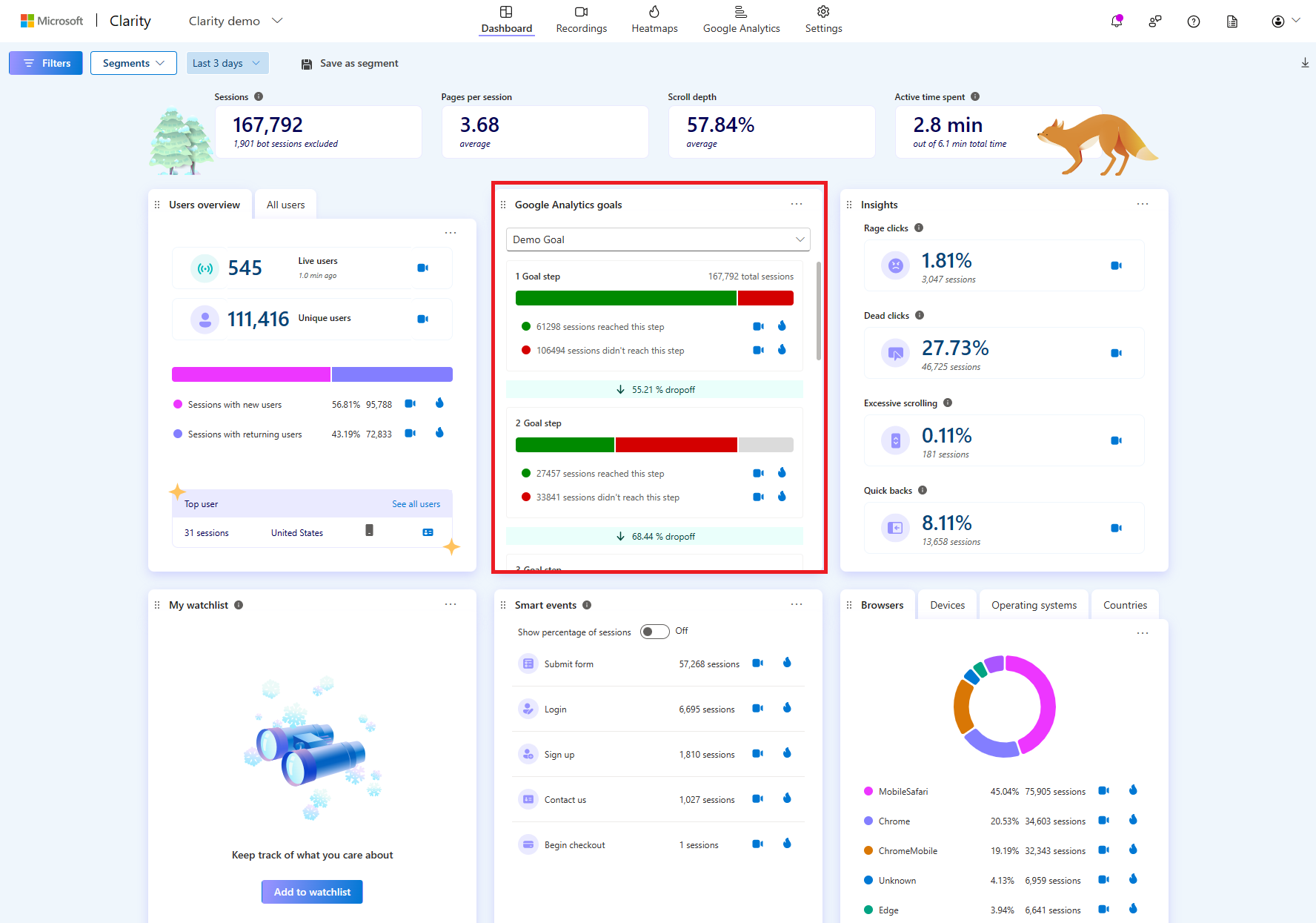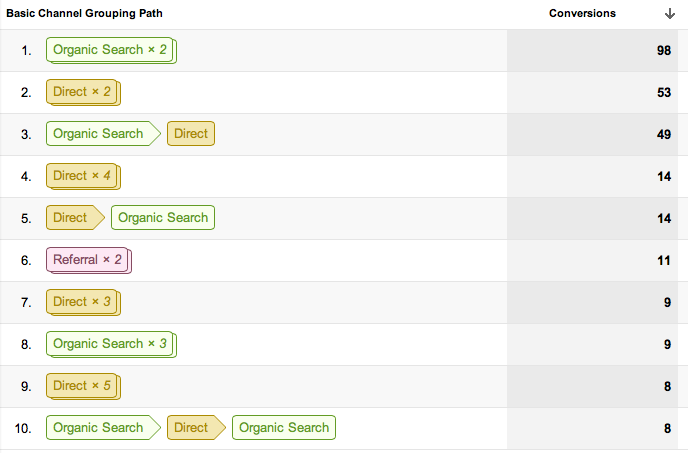Comprehensive Checklist of What Data Is Google Analytics Goals Unable to Track
Comprehensive Checklist of What Data Is Google Analytics Goals Unable to Track
Blog Article
Discover the Limitations of Google Analytics Goals: Revealing the Data Kind That Remain Untrackable
As services progressively count on data-driven decision-making, comprehending the limitations of devices like Google Analytics becomes vital. While Google Analytics Goals offer beneficial insights into customer interactions, there exist data kinds that avoid monitoring, posturing challenges to an extensive understanding of customer behavior. These untrackable information types question concerning the precision and efficiency of the analytics information that organizations greatly trust for their digital approaches. Curious to discover the surprise unseen areas in your data evaluation procedure?
Insufficient Customer Trip Tracking
Insufficient customer trip tracking within Google Analytics can prevent the capability to precisely examine user habits. When the user journey is not totally tracked, there are spaces in the information that stop an extensive understanding of exactly how users engage with a web site. This lack of understanding can cause missed possibilities for optimization and enhancements to the customer experience.
One common concern with incomplete individual trip tracking is the lack of ability to see the complete path that customers take in the past completing a goal or leaving the website. Without this info, it is challenging to identify where users might be coming across challenges or friction factors that avoid them from converting. In addition, incomplete tracking can cover the effect of certain marketing initiatives or internet site adjustments on individual actions.
To address this limitation, it is vital to establish up proper monitoring systems within Google Analytics to catch the whole individual trip. This may entail setting up occasion monitoring, goal funnels, or utilizing devices like Google Tag Manager to guarantee that no essential interactions go unrecorded. By getting a thorough view of the user journey, internet site owners can make even more informed decisions to improve customer involvement and drive conversions.
Acknowledgment Challenges
Browsing through acknowledgment challenges in Google Analytics calls for a thorough understanding of just how different touchpoints add to the overall conversion process. Attribution obstacles occur from the intricacy of modern-day customer journeys, where customers interact with multiple channels prior to converting. Google Analytics supplies numerous attribution models like initial touch, last touch, and linear, each offering a various viewpoint on exactly how credit report is assigned to touchpoints along the conversion path. These versions may not constantly properly reflect the real effect of each touchpoint on the conversion.
One usual attribution difficulty is the problem in connecting conversions to the correct resource, especially in cases where individuals interact with numerous networks before transforming. Furthermore, cross-device monitoring poses an additional attribution challenge, as customers often change between gadgets during their journey, making it challenging to track their communications effortlessly.
Offline Conversions
Given the challenges related to attributing conversions precisely in online channels, the dimension of offline conversions provides a significant chance for marketers looking for a more extensive understanding of their consumers' journey. Offline conversions describe actions that customers take in the physical world, such as making acquisitions in brick-and-mortar stores or over the phone, participating in events, or involving with published products - what data is google analytics goals unable to track. These conversions are crucial for services that run both online and offline, as they supply important insights into the performance of advertising projects throughout numerous touchpoints
Tracking offline conversions traditionally postured a substantial challenge for online marketers, as it was testing to connect these actions back to certain on-line interactions accurately. With improvements in modern technology, such as the integration of CRM systems, unique identifiers, and coupon codes, companies can now connect the gap in between online and offline information to obtain an extra alternative sight of client behavior. By effectively gauging offline conversions, marketing professionals can enhance their strategies, designate sources more successfully, and inevitably boost the total client experience.
Cross-Device Monitoring
Cross-device monitoring plays an essential duty in understanding the interconnected nature of customers' electronic interactions throughout numerous tools. In see this page today's omnichannel globe, where individuals seamlessly switch over between smartphones, tablet computers, and desktop computers, tracking their habits throughout these devices is important for online marketers to get a comprehensive view of their consumer journey.

Moreover, privacy issues and guidelines such as GDPR and CCPA have better complex cross-device tracking. With individuals demanding more control over their information and increased constraints on tracking innovations, marketing experts should find innovative and privacy-compliant means to link individual communications across devices.
Dynamic Content Involvement
Understanding customer engagement with vibrant content is pivotal in maximizing digital advertising techniques for enhanced target market communication. Dynamic material describes internet site aspects that alter based on customer habits, choices, or other factors, providing an individualized experience. Tracking user interactions with vibrant material poses challenges for typical analytics tools like Google Analytics.
While Google Analytics can track these details basic communications like clicks and page sights, it might struggle to catch more nuanced engagements within vibrant content. what data is google analytics goals unable to track. Metrics such as time invested on particular vibrant aspects, float activities, or communications within pop-ups are usually not conveniently quantifiable using basic tracking approaches. This restriction prevents marketers' capacity to fully realize just how customers are involving with dynamic web content and customize their approaches appropriately

Verdict
In verdict, Google Analytics goals have constraints in tracking insufficient individual trips, attributing conversions accurately, catching offline conversions, tracking cross-device interactions, and gauging top article vibrant material engagement. These restraints highlight the relevance of discovering additional tracking techniques and tools to obtain a more detailed understanding of customer habits and conversions past what Google Analytics can give.
While Google Analytics Goals deal useful understandings into user interactions, there exist data kinds that avoid tracking, presenting difficulties to a thorough understanding of customer habits.Incomplete customer trip tracking within Google Analytics can hinder the capacity to properly examine individual behavior. When the user journey is not totally tracked, there are voids in the information that prevent an extensive understanding of how customers connect with a site.One common concern with insufficient user journey monitoring is the lack of ability to see the complete course that individuals take before finishing an objective or leaving the site. By getting a detailed view of the customer journey, website proprietors can make more enlightened choices to boost individual engagement and drive conversions.
Report this page